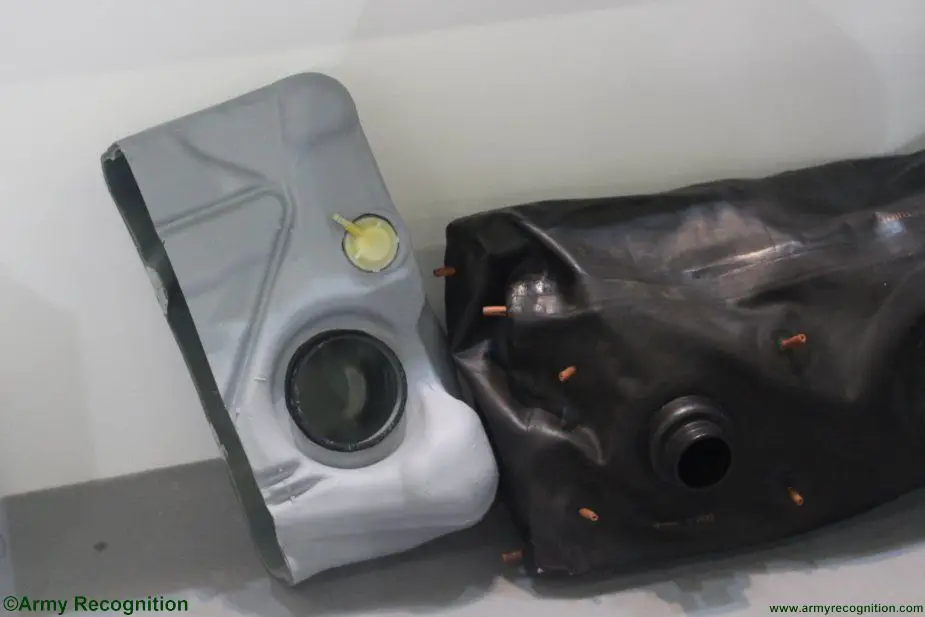Breaking news
Magam-Safety showcases new Self-Sealing Flexible Fuel Tank.
Magam-Safety Ltd. – a leading manufacturer of protective, rescue, and survivability equipment – showcases a self-sealing flexible fuel tank that prevents fuel leakage caused by ballistic damage following penetration of up to a 20mm bullet. The flexible tanks are suitable for a variety of applications including military tanks, helicopters, and UAVs.

Magam Safety self-sealing flexible fuel tank
According to Chairman, Amit Tesler, “We developed this technology to address the vulnerability of oil storage tanks and vehicle fuel tanks. Standard metal tanks, when penetrated, immediately begin to leak fuel. Our self-sealing technology, based on mechanical and chemical advances, prevents leakage by self-sealing the holes within 0.1 ms (milliseconds), reducing the ignition potential of fuel leaks, and thus saving lives and equipment. This is the only solution that prevents leakage following the impact of a 20mm bullet, while maintaining both sealing capability and low weight.”
Magam’s laminated, flexible rubber fuel tanks are made of several chemically sensitive layers of rubber, created according to a unique formula, and placed between two fuel resistible layers on a special fabric matrix. This process makes them much lighter than rigid, metal tanks, and easily and rapidly repaired. The typical weight is 12Kg ± 10 % per square meter, with a thickness of 10-12mm. In addition to supplying these tanks, the Company also treats existing fuel tanks, providing an on-site coating service. Any surface treated with Magam’s self-sealing technology also benefits from the thermal and corrosion protection provided by the coating.
Chairman Tesler continued, “Our solutions, based on Magam’s eighty (80) years of expertise in the development of tailor-made rubber solutions, deliver a unique combination of small size and weight together with flexibility and anti-crack stability. Our flexible fuel tanks are installed on all types of military aircraft, armored fighting vehicles, and maritime platforms around the world.”


























